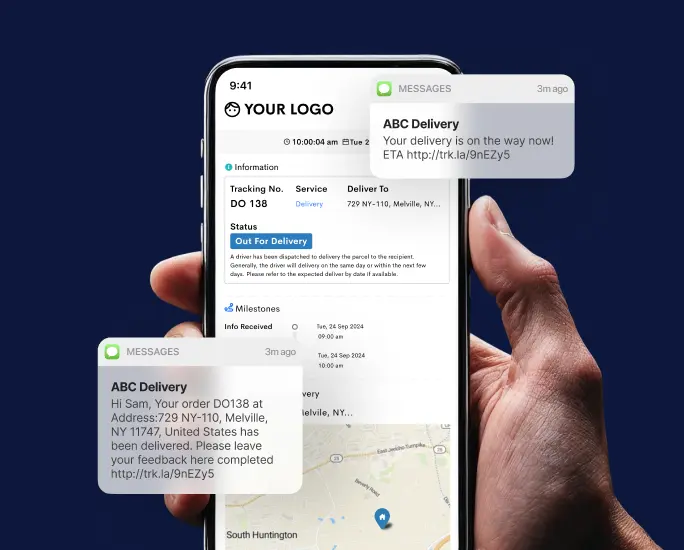Difference?
In logistics and supply chain management, two terms often arise: route planning and route optimization. While they might seem interchangeable at first glance, they serve distinct purposes and impact operations differently. Understanding these concepts’ differences can help you streamline your processes, save costs, and improve customer satisfaction.
| Maximize Efficiency with Route Planning Reduce travel time and fuel costs with Detrack’s intelligent route planning features. Try Detrack Today! |
What is Route Planning?
Route planning is the process of determining the best route for delivering goods or services. It involves identifying the most efficient path from Point A to Point B, considering factors like distance, traffic conditions, delivery windows, and vehicle capacity. The goal is to ensure that goods are delivered on time while minimizing costs such as fuel consumption and driver hours.
Key Elements of Route Planning
- Geographical Mapping: Understanding the geography of the delivery area is at the heart of route planning. This includes knowing the roads, traffic patterns, and possible travel time obstacles.
- Customer Locations: Route planning starts with clearly understanding where customers are located. Depending on the business, this could be a single drop-off point or multiple destinations.
- Delivery Windows: Customers often specify preferred delivery times. Route planners must account for these windows to ensure that deliveries are made at the right time, which can be crucial for customer satisfaction.
- Vehicle Capacity: The size and capacity of the delivery vehicles play a significant role in route planning. Overloading a vehicle can lead to delays and increased wear and tear, while underutilization can result in unnecessary trips.
- Regulatory Considerations: In some regions, regulations may govern delivery times, vehicle weights, or environmental restrictions. Compliance with these regulations is essential for avoiding fines and maintaining a good reputation.

What is Route Optimization?
Route optimization takes route planning to the next level. It’s not just about finding a workable route; it’s about finding the most efficient one. Route optimization uses advanced algorithms and technology to calculate the best possible routes, considering various variables. The goal is to minimize costs, reduce delivery times, and improve overall efficiency.
Key Elements of Route Optimization
- Advanced Algorithms: Route optimization uses sophisticated algorithms to analyze multiple variables simultaneously. These algorithms can quickly calculate the most efficient routes, considering real-time traffic data, delivery windows, vehicle capacity, and more.
- Dynamic Adjustments: One significant advantage of route optimization is its ability to make real-time adjustments. If a traffic jam occurs, the system can reroute drivers on the fly, avoiding delays and ensuring timely deliveries.
- Cost Efficiency: By optimizing routes, businesses can reduce fuel consumption, lower vehicle maintenance costs, and decrease the number of drivers needed. This results in significant cost savings over time.
- Improved Customer Satisfaction: Route optimization ensures deliveries are made within the specified time windows, leading to happier customers. It also allows businesses to provide more accurate delivery estimates, enhancing customer trust and loyalty.
- Sustainability: Optimized routes often result in fewer miles driven, reducing the delivery operations’ overall carbon footprint. This is an increasingly important consideration for businesses looking to improve their environmental impact.

Why Businesses Need Both
While route planning and route optimization serve different purposes, they are essential for a successful delivery operation. Here’s why businesses need both:
- Foundation and Fine-Tuning: Route planning provides the foundation by creating a workable route that meets basic requirements. Route optimization fine-tunes this route, making it as efficient as possible.
- Scalability: As businesses grow, their delivery operations become more complex. Route planning helps manage this complexity, while route optimization ensures that growth doesn’t lead to inefficiencies or increased costs.
- Cost Management: Route planning helps keep costs under control by minimizing unnecessary trips and ensuring that vehicles are used efficiently. Route optimization takes this further by reducing fuel consumption, vehicle wear and tear, and labor costs.
- Customer Satisfaction: Both route planning and optimization contribute to better customer service. Route planning ensures that deliveries are made within the specified windows, while route optimization allows for more accurate delivery estimates and quicker responses to changes in conditions.
- Sustainability: With increasing emphasis on sustainability, businesses are looking for ways to reduce their environmental impact. Route planning and optimization can contribute to this goal by minimizing the miles driven and reducing fuel consumption.
Conclusion
Route planning and route optimization are crucial components of a successful logistics operation. While route planning lays the groundwork by creating a workable route, route optimization fine-tunes it to achieve maximum efficiency. By understanding the differences between these two processes, businesses can leverage both to improve their delivery operations, reduce costs, and enhance customer satisfaction.
Having a solid strategy for route planning and optimization isn’t just a nice to have—it’s a necessity. With the right tools and technologies in place, businesses can ensure that their deliveries are not only on time but also executed in the most efficient, cost-effective, and sustainable way possible.










